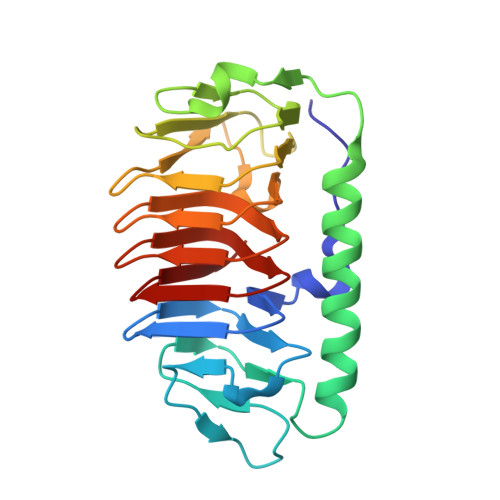Characterization of microbial antifreeze protein with intermediate activity suggests that a bound-water network is essential for hyperactivity.
Khan, N.M.U., Arai, T., Tsuda, S., Kondo, H.(2021) Sci Rep 11: 5971-5971
- PubMed: 33727595
- DOI: https://doi.org/10.1038/s41598-021-85559-x
- Primary Citation of Related Structures:
7DC5, 7DDB - PubMed Abstract:
Antifreeze proteins (AFPs) inhibit ice growth by adsorbing onto specific ice planes. Microbial AFPs show diverse antifreeze activity and ice plane specificity, while sharing a common molecular scaffold. To probe the molecular mechanisms responsible for AFP activity, we here characterized the antifreeze activity and crystal structure of TisAFP7 from the snow mold fungus Typhula ishikariensis. TisAFP7 exhibited intermediate activity, with the ability to bind the basal plane, compared with a hyperactive isoform TisAFP8 and a moderately active isoform TisAFP6. Analysis of the TisAFP7 crystal structure revealed a bound-water network arranged in a zigzag pattern on the surface of the protein's ice-binding site (IBS). While the three AFP isoforms shared the water network pattern, the network on TisAFP7 IBS was not extensive, which was likely related to its intermediate activity. Analysis of the TisAFP7 crystal structure also revealed the presence of additional water molecules that form a ring-like network surrounding the hydrophobic side chain of a crucial IBS phenylalanine, which might be responsible for the increased adsorption of AFP molecule onto the basal plane. Based on these observations, we propose that the extended water network and hydrophobic hydration at IBS together determine the TisAFP activity.
Organizational Affiliation:
Graduate School of Life Science, Hokkaido University, Sapporo, 060-0810, Japan.















